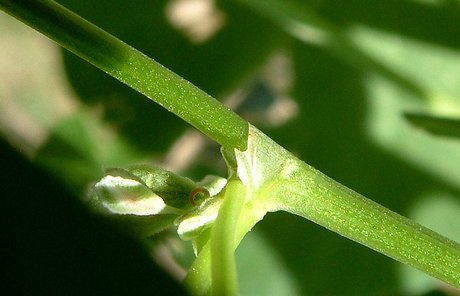Plant Nodes and Internodes
Nodes are the found in stems and serve as the point of origin of leaves, buds, and branching twigs. They are essential plant parts wherein biological processes, structural support and healing take place.

Leaf node by Pawpaw67.
Nodes are very easy to be distinguished as the base of a bud, twig, branch or twig is always attached to it. They can also be seen even without the presence of leaves or buds, as there will be a tiny knob-like on the wood or stem of the plant, as well as scar on the wood where leaves have fallen away. The nodes of bamboos, smooth hydrangea and forsythia are solid due to the hollow plant stem.
Internodes
The internodes are the sections or spaces that are found on the stem in between nodes. Nodes are known to be one of the crucial external parts of the plant, and this goes the same with internodes as they are primarily the blood vessels that carry hormones, water and food from one node to another.
Due to the differences of the structures of plants, some internodes are spaced far from each other, while there are also some plants that show notable close nodes and smaller internodes as the leaves are close to each other.
Boxwoods and yews have short internodes because of their dense leaves and dwarf conifers also have closely-spaced nodes. This is the reason why certain plants can be pruned or sheared into any shape, including those that can be formed as special topiaries. Roots can also emerge from nodes, depending on the kind of plant species.